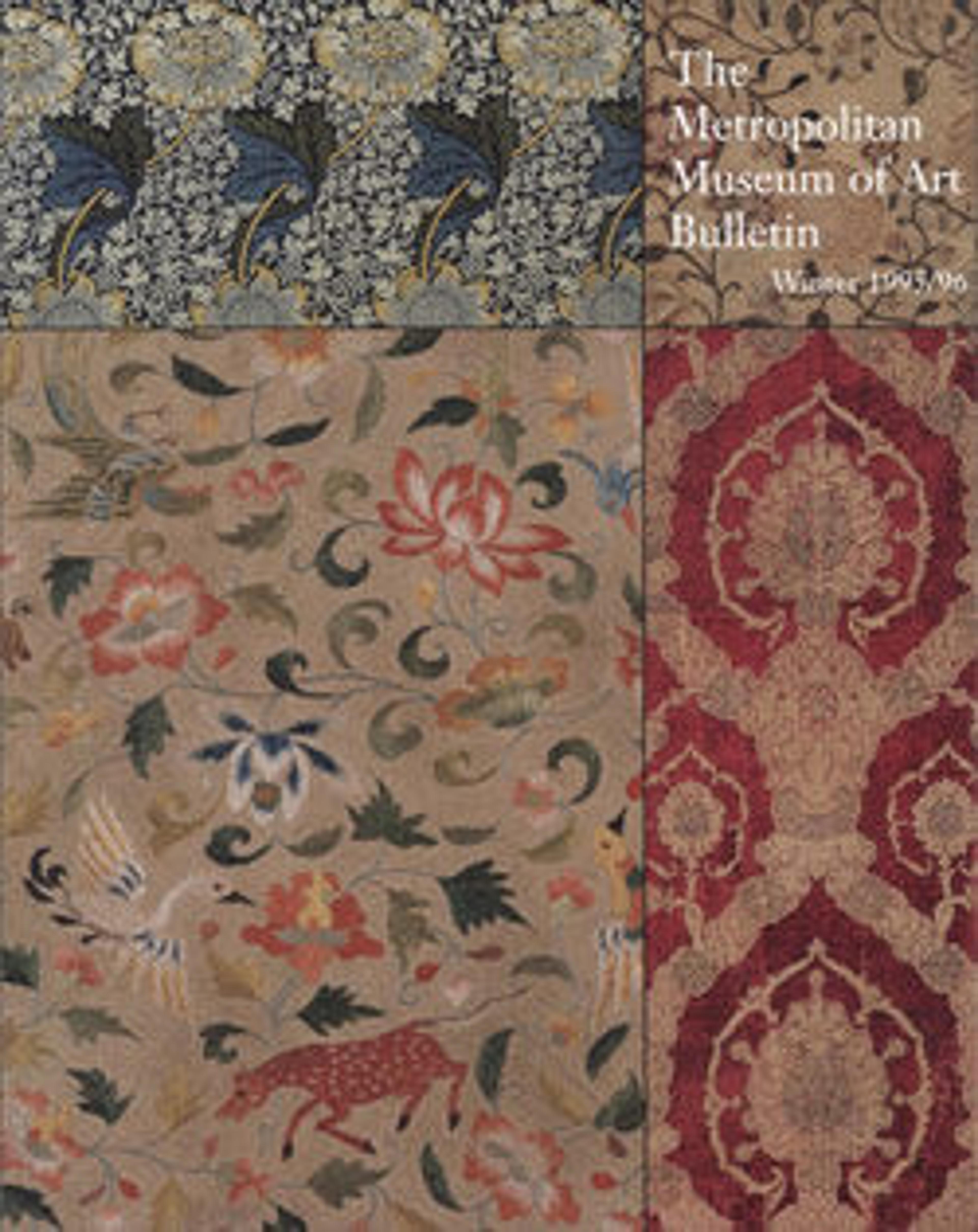Embroidered Carpet
According to tradition, Zeruah Higley Guernsey (1805-1899) made every part of this carpet from wool she sheared from her father’s sheep. While it has been recounted that Zeruah spun, dyed, and wove the carpet’s base textile, which is a blue and white check twill weave fabric, it seems curious that she would have gone through all the trouble to weave a decorative fabric only to completely cover it with embroidery. It may have been yardage she purchased from a local weaver. The same question can be asked about the wool embroidery yarns she used—did she really spin and dye them all herself? But Zeruah, without a doubt, was the designer and embroiderer of the carpet, which supposedly took her two to three years to complete. It is signed at the top with her initials "Z H G" and the date "1835". Each of the seventy-six chain-stitch embroidered squares, decorated for the most part with flowers, leaves, and birds, is different. There are two floral squares that are marked with initials other than Zeruah’s. It is thought that these two, marked "L F M" and "BY F B" were made by two Native American students who stayed with the Guernsey family while attending the local Castleton Medical College (1818-1862), the first medical college in Vermont. There are several other exceptional squares; one features a courting couple, and two others show either a pair of kittens or a pair of puppies on a striped background that were undoubtedly copied from popular lithographs of the day. A square that has been particularly admired depicts a blue cat, an image that inspired the writing of an award-winning children’s book, "The Blue Cat of Castle Town" (1949) by Catherine Cate Coblentz. This design was likely influenced by charming groupings of usually six blue and white Dutch Delft tiles that altogether formed an image of a sitting cat. Perhaps Zeruah’s family had one of these Delft tile compositions in their home. The carpet lay for many years in the Guernsey family parlor. The large rectangular piece on the left side of the carpet, embroidered with a basket of fruit and flowers, with a border of triangles on three sides, served as a detachable hearth rug. Probably removed during the colder months to protect it from embers or ashes from the fireplace, in the summer it lay over the parlor’s empty hearth. Although Zeruah didn’t marry farmer Menira Caswell (1799-1881) until 1846, eleven years after the completion of her carpet, it is known and beloved as the "Caswell Carpet".
Artwork Details
- Title: Embroidered Carpet
- Maker: Zeruah H. Guernsey Caswell (1805–ca. 1895)
- Date: 1832–35
- Geography: Made in Castleton, Vermont, United States
- Culture: American
- Medium: Wool, embroidered in chain-stitch
- Dimensions: 156 x 147 in. (396.2 x 373.4 cm)
- Credit Line: Gift of Katharine Keyes, in memory of her father, Homer Eaton Keyes, 1938
- Object Number: 38.157
- Curatorial Department: The American Wing
More Artwork
Research Resources
The Met provides unparalleled resources for research and welcomes an international community of students and scholars. The Met's Open Access API is where creators and researchers can connect to the The Met collection. Open Access data and public domain images are available for unrestricted commercial and noncommercial use without permission or fee.
To request images under copyright and other restrictions, please use this Image Request form.
Feedback
We continue to research and examine historical and cultural context for objects in The Met collection. If you have comments or questions about this object record, please complete and submit this form. The Museum looks forward to receiving your comments.
